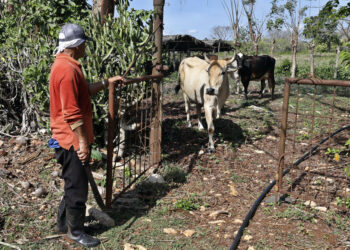Photos: Alejandro Ramírez Anderson
A city is its inhabitants, and its history — its great epics and its more modest episodes, its everyday stories. It is its idiosyncrasy, its ways of being and doing; it is a space for longings, dreams, frustrations and hopes…. A city is alive, and it has a memory; knowing where it comes from is a useful clue for imagining where it is going.
That necessary look back is given a helping hand by the restoration workshops of the Havana City Historian’s Office. They are like the operators of a time machine that is able to bring fragments of the past to the present, or to take us back to yesteryear.
“You have to hit iron with everything you have in you,” says Roberto, at the Gaspar Melchor de Jovellanos school/workshop. Illuminated by a charcoal-fired forge, he adds, “Strength is important, but it’s worthless without determination and love for what one does.” He strikes a life-giving blow, made accurate by a sharp eye and powered by a strong arm. It is hard to believe that such soft shapes can come from such a rough action.
(Forge workshop)
Ingrid has a job that requires a large measure of responsibility. It is a very serious job, one where she is laughing a lot — all the time. As she makes her way among the papers, she has as much fun as she did at any time in her childhood. She spends hours among the different substances and fibers, uncovering sections, recreating them or simply accepting their absence as a lost cause. From her workshop, the material will go to libraries, the House-Museum and the archives of the City Historian’s Office. Here: the resurrection of an engraving.
(Document restoration workshop)
Few things have such a close association with silence as stones. A stone is mute, and deaf…. But Sandra insists that “stones talk to me.” There is no need to hear them; they use a different kind of language, the one that is understood with hands and eyes. This restorer says that when she works, the piece she’s working on makes a revelation, confides a secret. It shows her where it wants to be healed. Afterward, it is grateful for the cure. And then her satisfaction is such that, apparently, it is the stone that has worked with her, and that somehow has restored her.
(Plaster and stone workshop)
Makeup, as everyone knows, is used for many things, including for creating an image of invulnerability in the face of time; or, at least, an image that reduces the traces of time. With that being the case, the polychrome workshop’s activities are contradictory: they “put make up on” to age. Patricia and her colleagues restore whatever is missing in different pieces to provide an aged look, to reproduce the vestiges of the years. That is not the only paradox in this workshop: poison is applied to polychrome wood objects to protect them from insect attacks; that is, they are poisoned so that they will survive. Colors are returned, the piece is left otherwise untouched as much as possible, and the worn effect is reproduced — all on diverse, polychrome wood baroque-period pieces, religious figures, Solomonic columns, and other items scattered throughout, waiting their turn.
(Restoration workshop)










